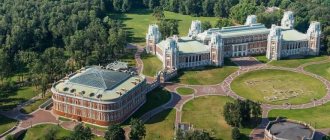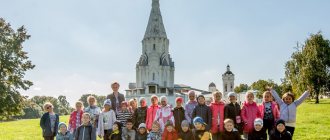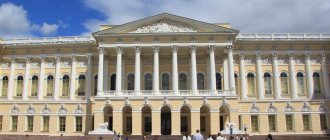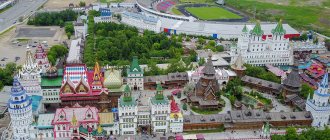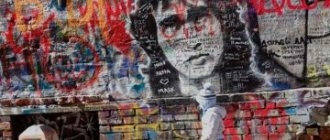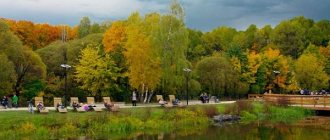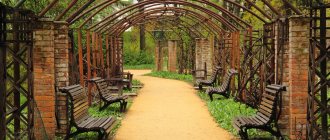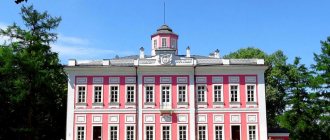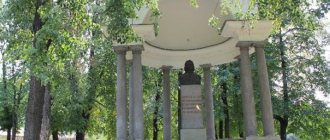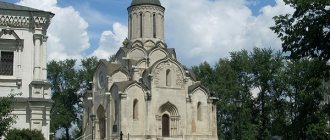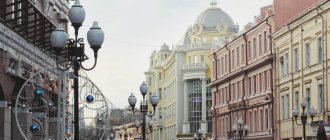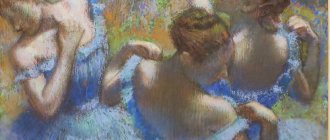The Tsaritsyno Museum-Reserve is one of the most powerful museum and park complexes in the capital. Here nature, architecture and a huge living space inside the city merge together, where everyone will find something interesting for themselves. Someone comes here for history, to join the Catherine era and the only example of “Russian Gothic”. Someone wants to admire the unusual territory of the reserve, which the creators tried to leave as natural as possible, harmoniously fitting architectural elements into the existing lines of the landscape. For some, Tsaritsyno is just a nice park where you can lie down with a book in the shade, take an evening walk with the dog, or go skiing.
© Alyonka Yolka
Hotels in Tsaritsino near the museum-reserve
Now the Tsaritsynsky Park complex is:
- Grand Palace;
- Bread House;
- Cavalry Corps;
- Small and Middle Palaces;
- Tower Ruin;
- Bridges, turrets, rotundas;
- Temple of the Icon of the Mother of God.
Also on the territory of the park there are many lost buildings (Great Cavalier Palace, Kamer-Yunfar Pavilion, etc.), in memory of which their foundations were left.
The key figure of the complex is the Grand Palace. The initial buildings were completed in 1784, the modern reconstruction was completed in 2007.
Now it is a venue for a variety of art exhibitions, musical programs, costume balls and photo sessions in historical costumes.
© Marina
How to get to Tsaritsino?
Tsaritsyno is located in the south of Moscow, just under 20 km by car or bus from the center of the capital, but the best option for a tourist is to get there by metro in less than 45 minutes. You can stop at the Tsaritsyno or Orekhovo metro stations (metro line No. 2, Green).
I recommend stopping at Tsaritsyno station as it is closest to the main gate, although after the tour you can return to Orekhovo metro station.
Museum and attractions of Tsaritsyn
The Great Kazakov Palace is designed in the style of classicism with pseudo-gothic elements. Today it houses permanent museum exhibits, as well as temporary exhibitions, concerts and other events.
The Church of the Icon of the Mother of God “Life-Giving Source” was originally built in 1722 on the site of a wooden church, after which it was rebuilt several times, and was finally restored only in 1998.
The Small Palace is located on a hill, it is built in the shape of a pyramid and looks more like a park pavilion than a full-fledged palace. However, a white stone emblem with the monogram of the Empress in the rays of glory has been preserved here, which recalls the original purpose of this building.
The Middle Palace (Opera House) is a building that Vasily Bazhenov considered his architectural pride. Outwardly, it looks like a carved jewelry box. Despite the name, music first sounded here at the end of the 20th century, and until then the purpose of the Opera House was purely decorative.
Opening hours of Tsaritsyno in Moscow
The park is an open space with free entry and is open from 6am to 12pm. It can be accessed through any of 11 different entrances. Tours of the Grand Palace and the buildings of the architectural complex require payment.
Their opening hours are as follows:
- Tuesday to Friday from 10:00 to 18:00 (closed on Monday)
- Saturday 10:00-20:00 pm
- Sunday 10:00-19:00 pm
You can find excursions to Tsaritsino on Tripster.
Additional car parks
If you come by personal vehicle for a walk around the State Museum-Reserve on weekends or holidays in good weather, you will have to look for parking spaces. At such times, thousands of visitors gather here. On Saturdays, from morning to evening, dozens of wedding processions come to the park, which take up a lot of space in the parking lots. Not far from the territory there are city paid parking lots on Kaspiyskaya and Luganskaya streets. You can travel around the State Museum-Reserve by electric minibuses. Their route runs throughout the entire territory: from the main entrance to the gate leading to the Orekhovo metro station.
Ticket price to Tsaritsyno
You can buy tickets on the day of the excursion at the entrance to the complex. To do this, you need to go through access control at the main gate of Tsaritsyno and after passing the control turn to the right, where you will find the Tsaritsyno Information Center and ticket office.
Tickets can be combined or for just one seat:
- Grand Palace and Bread House: 400 rub. Buying this ticket is the best option if you don't have much time.
- Grand Palace, Bread House, greenhouses (all three), Middle Palace (or Opera House), Third Cavalry Corps and Small Palace: 890 rubles. This is the best option if you don't want to miss anything in Tsaritsino.
- Middle Palace (or Opera House): 150 rub.
- Third Cavalry Corps: 150 rubles.
- Small Palace: 100 rub.
- There is no charge for either the first or second cavalry corps.
- You also pay for greenhouses (250 rubles), but they have slightly different opening hours: from Wednesday to Friday from 10:00 to 18:00 or on Saturdays from 10:00 to 19:00.
- On the third Wednesday of every month, entry to the palaces and exhibitions is free, in which case you must obtain a free ticket from the box office.
Find excursions in Moscow >>
Tariffs for paid parking without event tickets
If visitors arrived by personal transport without tickets to events or to the museum, they can leave the car only with payment:
- on weekdays from Monday to Friday, the first three hours are paid in the amount of 100 rubles, the cost of each subsequent one is 50 rubles;
- on weekends and holidays you will need to pay 200 rubles for 3 hours, the rest of the time - 100 rubles. for each subsequent hour;
- excursion buses stop at the parking lot without paying if you fill out a “Excursion Bus Travel Form for Paid Parking” with the parking lot administration.
Attention! Payment is accepted exclusively in cash through the terminal at the exit from the site. Free travel can only be obtained from the parking lot administration. .
What is Tsaritsino?
A park, a palace and a museum - all in one place. The Tsaritsyno Museum-Reserve in Moscow is a complex of palaces and parks built by Empress Catherine the Great as her country residence. What stands out on this 405-hectare site is its 18th- and 19th-century architectural complex, much of which was completely restored for public use between 2005 and 2007.
The main palace “Tsaritsyno” is the only pseudo-Gothic palace in Russia. The buildings house various museums and exhibitions. Meanwhile, the green area occupies most of the park and includes gardens, forests, ponds or ravines.
We also invite you to visit Kolomensky Park in Moscow. Read more about it in the article at the link.
Catherine II in Tsaritsyn
In 1767, Empress Catherine II arrived in Moscow and wished to see the picturesque surroundings of the ancient capital. The Empress visited the villages of Kolomenskoye, Tsareborisovo and the village of Saburovo; on the other side of the river she saw the Kantemirov estate, surrounded by greenery. Seven years later, the village of Black Mud was purchased by the empress. She wrote down her memories as follows: “One day, tired of wandering through the valleys and meadows of Kolomenskoye, I went to the high road leading from Moscow to Kashira, a city that exists in the world, but is not on the map. This road led to a huge pond connected to another, even huge one: but the second pond, rich in the most beautiful views, did not belong to Her Majesty (the deceased Elizaveta Petrovna), but to a certain Prince Cantemir, her neighbor. The second pond was connected to the third pond, which formed countless bays.”
Having bought the estate she loved so much for 25,000 rubles, the empress wrote: “I called it Tsaritsyn’s village. This wondrous area, which, according to everyone, is an earthly paradise, was previously called “Black Mud”.
History of Tsaritsyno: the Empress’s whim
In 1775, Catherine the Great bought a large plot of land in the south of Moscow with greenhouses where grapes, lemons, etc. were grown. This place became known as the queen, “the city of the queen.” Empress Catherine II wanted to have a suburban palace on this estate because of its magnificent natural surroundings. Therefore, she turned to the services of the architect Vasily Bazhenov, who began construction in 1776.
The building, part of a group of buildings, was supposed to symbolize Russia's recent victory over Turkey. Making an irrational decision that is still not understood, the Empress, because she did not like the work and had serious disagreements with Bazhenov, ordered it to be demolished and fired the architect. The remains are still visible in Tsaritsyn.
He was succeeded by Matvey Kazakov, another highly respected architect, whose work developed into a style called Russian pseudo-Gothic. The Empress died during its construction (1786-1796), the almost completed palace remained unfinished, and Tsaritsyno was abandoned.
Because of all this, the Grand Palace is known as “the Empress’s whim.” Over time, what remained of the Grand Palace and the rest of the complex's buildings, either begun or planned, completely collapsed. Since the middle of the 19th century, Tsaritsino was occupied by dachas.
During the Russian Revolution, Tsaritsyno was turned into a museum, and the tour of the mounds, heaps of earth and stones raised on the graves of the Slavic Vyatichi (8th-13th centuries), was very successful. Between 1987 and 1995, the restoration of some ancient monuments was completed by Polish and Russian specialists. Tsaritsyno began to be called a museum-reserve.
Later, at the beginning of the 21st century, between 2005 and 2007, the Grand Palace and other ancient ruined buildings such as the Bread House were restored. The park space has also improved significantly. Today there is a memorial statue to Catherine II, which you will find in the main hall of the Grand Palace.
Grand Palace
1
www.msk-guide.ru /page_21226.htmAt the "Toothy" arch
76393
author: Rebrov Alexander
more photos →
The majestic building of the Grand Palace occupies the main place in the central part of the Tsaritsyno estate. The fate of the building is very complicated - the palace, the construction of which began more than two hundred years ago, was completed only in 2007. The Grand Palace is the drama and mystery of Tsaritsyno Park.
The unique structure, erected in 1775 by the outstanding architect Bazhenov, was destroyed by order of Catherine II. A tragedy occurred not only for the fate of the great architect and his entire life, but also for the entire history of the complex and Russian architecture.
The new building was rebuilt by the architect Mikhail Kazakov, but he also failed to complete the work. Only in 2007, after a two-year reconstruction, the estate appeared before Muscovites and guests of the capital in its elegant, magnificent appearance. This is one of the main park attractions of Moscow, which we recommend to all guests of the capital to visit, especially in the summer.
Exhibitions Tsaritsyno
Most Tsaritsyno buildings in Moscow have exhibitions, both temporary and ongoing, that are part of the Tsaritsyno museum program. This extensive and varied museum has an extensive collection of objects that are the result of various historical circumstances. Some of the themes and items you can see inside his buildings are:
- Soviet decorative and applied art of the 20th century.
- Traditional decorative and applied arts of Slavic peoples and other ethnic groups.
- Russian jewelry from the 16th to the 20th century.
- Archaeological finds - from mounds to household items of the Vyatichi (XI-XII centuries), to tiles, coins or fragments of buildings of the 16th century. or the time of Catherine II.
- Sculptures
- History of Russia and Tsaritsyno of Catherine II.
First floor
The halls on the first floor are dedicated to the history of the estate. You will learn how it was built and what the Grand Palace was like at the beginning of the 21st century (in the hall there is a model of the palace before reconstruction).
An interesting exhibition of bronze busts of Russian grand dukes, tsars and emperors. The figures were cast in St. Petersburg in the 19th century at the factory of Felix Chopin.
Also on the ground floor there is a permanent exhibition “The Old and New of Tsaritsyno”. Fragments of the brickwork of the building walls are presented, including part of the first Bazhenov foundation and a fragment of the foundation of the Palace designed by Kazakov.
Having passed the main entrance and the beautiful staircase, we will enter the most luxurious hall of the Palace - Catherine's Hall. A sculpture of the Russian Empress, 2 meters 64 cm high, is installed here.
Painted parquet and mirrors in gilded frames, bronze and onyx trim, marble and gilding, crystal chandeliers and sconces - all this cannot but delight. Here you can admire small details (for example, door handles in the shape of lions' heads) and interesting ceiling designs and parquet patterns.
In the following halls there is a permanent exhibition “Catherine II. The Golden Age of the Russian Empire,” telling about the life and family of the Empress.
Visiting rules
You cannot take bags or backpacks with you into palaces and exhibitions. They must be left in lockers. You can take pictures, but do not use flash or tripods.
To find budget accommodation (hotels, apartments, houses) in Moscow, we recommend using the Hotellook service, where you can find a huge number of accommodation options at different prices and with high ratings.
Attractions nearby
A visit to Catherine Park can be combined with sightseeing nearby. Near the Dostoevskaya metro station there is the Russian Army Theater, Suvorovskaya Square. If you walk along Samotechnaya Street leading from it to the Garden Ring, you can get to the famous Tsvetnoy Boulevard. In its central part there is the Nikulin Circus and the Tsvetnoy department store, and the area is full of trendy restaurants and coffee shops.
The second direction is along Durova Street, which encircles the park from the south to the east. You will come across the theater building “Grandfather Durov’s Corner”, which has a museum of the famous tamer, and behind Olympic Avenue is the “Russian Song” theater.
In the block behind the “Russian Song” there is an island of the Trinity-Sergius Lavra in Moscow. Here is the courtyard of this monastery, closer to Olympic Avenue is the Trinity Church, and in the courtyard at the junction of the avenue with the Garden Ring there is the “At the Trinity” museum.
Behind the Olympic Stadium on Durova Street is the main Muslim temple of the capital - the Moscow Cathedral Mosque. 300 meters to the east, Durova Street opens onto Mira Avenue. Beyond this intersection begins the Botanical Garden of Moscow State University with trees the same age as those growing in Catherine Park. In front of the botanical garden there is a garden-museum “Apothecary Garden”, as well as the Museum of the Silver Age.
Services and special products
Tsaritsyno offers its visitors various services such as restaurants, children's playgrounds, a sports ground, boating, bicycle and scooter rentals, and small electric cars. You have up to six shops or places to buy souvenirs. The main store is located in the underground space of the Grand Palace.
As for specialties, the Third Cavalry Corps offers a variety of jams prepared according to 19th-century recipes and three types of very original herbal teas, as well as unique games for children related to the location.
But the most typical thing for visitors to Tsaritsyn is to rent ancient costumes from the 18th century and take pictures in them with family or friends in the Tauride Hall of the Grand Palace (from 300 to 400 rubles per person).
Carved in stone. The most striking projects of Vasily Bazhenov
Instead of the Kremlin walls serving as a fence for temples and shrines, the architect designed a continuous row of buildings. He saw the Kremlin not as a fortress, but as a grandiose social center to which all the streets of Moscow were supposed to converge. Public Domain / Illustration from the book “Brothers. History of Freemasonry in Russia"
There are no documents left indicating that Pashkov’s house was designed by Vasily Bazhenov. This is only stated by popular rumor and the fact that this building is one of the best examples of the French style in Russian architecture, which was characteristic of Vasily Bazhenov. Public Domain / View of Mokhovaya Street and Pashkov House, drawing by G. Baranovsky, 1840s
The Pashkov House, built on Vagankovsky Hill, was for a long time the only point in Moscow from where one could look down on the Kremlin towers. Commons.wikimedia.org / Sergey Korovkin 84
The architect planned the Tsaritsyno estate as a single whole, as a whole world, where nothing would stand out, everything would be equal: even the Empress’s palace is not a dominant feature here, organically fitting into the ensemble. Commons.wikimedia.org / Marina Lystseva
When construction was almost completed, Catherine II paid a surprise visit. The Empress stated that the palace was too dark, that it was impossible to live in it, and demanded that some of the buildings be demolished. Commons.wikimedia.org/El Pantera
Soon, however, Catherine II moderated her ardor and demanded less radical changes. Bazhenov’s student Matvey Kazakov supervised the “finishing” of the estate, which especially humiliated the architect. Commons.wikimedia.org/Ebenda
The Big Bridge over the ravine in the Tsaritsyno estate is one of the few surviving buildings for which Bazhenov’s authorship has been accurately established. Commons.wikimedia.org / Korzun Andrey
According to Bazhenov’s idea, a Figured Gate was also to be erected in the park. Commons.wikimedia.org / Drawing of figured gates, Vasily Bazhenov
After his death, Bazhenov began to be credited with many buildings to which he had nothing to do. This trend especially intensified during Soviet times. Commons.wikimedia.org / Korzun Andrey
As a result, almost all pseudo-Gothic buildings of the 18th century in the Moscow region, regarding the authorship of which no documents have been preserved, are attributed to Vasily Bazhenov. Commons.wikimedia.org/Al Shipilin
Moscow - Kalachinsk - fare and travel time
Below is information about how many hours it will take you to get from Moscow to Kalachinsk, as well as the approximate cost of travel (average ticket price) for one or another type of transport.
| Travel time | Price | Booking | |
| Airplane | — | — | book |
| Train | — | — | — |
| Bus | — | — | — |
| Auto | 1 day 12 hours 29 minutes | 11456.12 | rent |
If you are still in doubt about which type of transport to prefer, we suggest that you read detailed reviews from our users about each of them:
